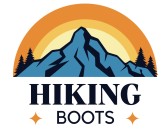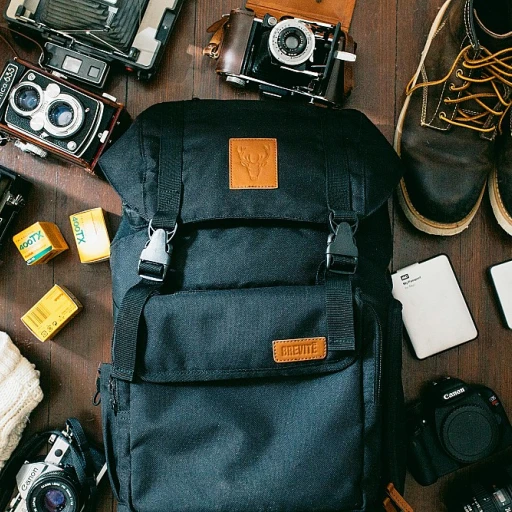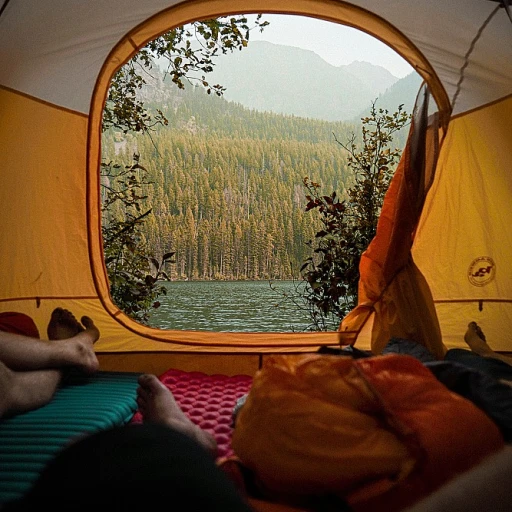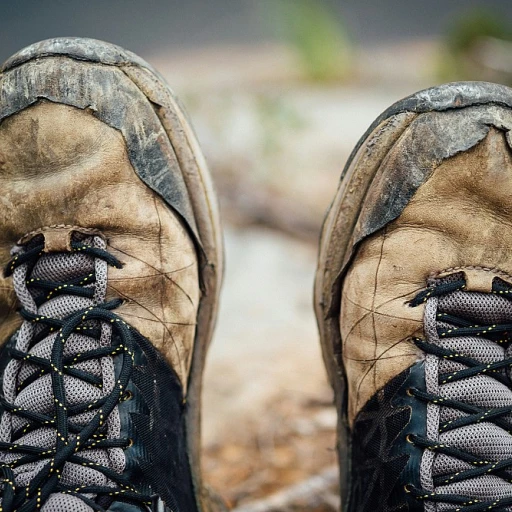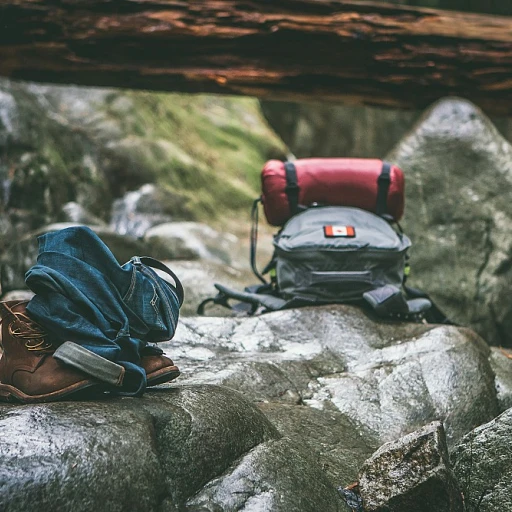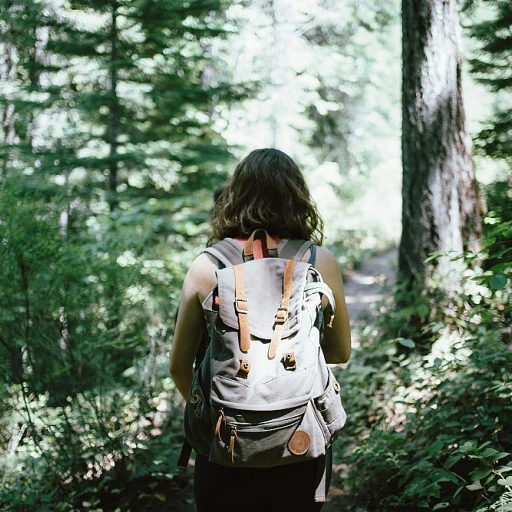
Understanding Different Types of Outdoor Boots
From Trailblazing to Summiting
Navigating the world of outdoor footwear can seem like a trek unto itself, with the diverse types of boots available to suit every trail and summit. Understanding these varieties is essential for making an informed choice, whether you're seeking the best hiking boot for an afternoon trek or more robust options capable of weathering rugged mountainous paths.
- Hiking Boots: Designed for basic to medium difficulty trails, these are the quintessential choice for moderate walks. Typically offering support up to the ankle, they balance comfort and support.
- Mountaineering Boots: Perfect for the harsh conditions of elevated terrains and potentially snowy hikes. These boots are built to endure more severe conditions, providing superior insulation and support.
- Trail Shoes: A practical choice for faster paced hikes or running on trails. Light in weight, these are akin to a sturdy running shoe, providing less support but far greater flexibility and speed.
Selecting the right type of footwear depends significantly on who will wear them. For men, boots are often designed with a wider fit and greater shaft height compared to women’s options. A popular choice among men is the Hoka range, known for their light weight and reliable support, often boasting a mid-height and waterproof material.
For women, boot designs tend to cater to a narrower fit, focusing on a snug, stable feel while still providing ample room for trekking comfort. Certain models like the Merrell Moab series stand out for their average rating and praised comfort. Their mid waterproof versions offer solid protection against the elements, while GTX versions integrate Gore-Tex technologies for enhanced waterproof capabilities.
In terms of material, leather options provide long-term durability and are often favored for their classic appeal and robustness, whereas synthetic blends or suede might be lighter and more breathable, fitting for warmer or drier climates.
Nevertheless, before stepping onto any terrain, checking recommendations and reviews available on various platforms such as Amazon becomes a critical step. By examining the rating stars and price wishlist, as well as the feedback from those who've tested the product in real-world conditions, you can make more informed decisions.
Key Features to Look for in Outdoor Boots
Essential Attributes to Evaluate When Selecting Boots
When choosing the right outdoor boots, several key features can significantly impact your comfort and performance on the trail. Whether you’re looking at hiking boots for men, women, or unisex options, understanding these features can help you make the best decision tailored to your specific needs.
Emphasis on Durability and Material
Look for boots that are constructed with sturdy materials like leather or gore tex. Leather boots offer robustness and typically excel in longevity if well-maintained. Meanwhile, waterproof and breathable membranes like GTX (Gore-Tex) are popular for keeping feet dry and comfortable, especially in waterproof hiking boots.
Delving into Design and Features
Design is crucial to enhance both utility and protection:
- Waterproofing: Essential for wet trails or unpredictable weather. Products like the Merrell Moab series provide excellent waterproof options.
- Weight: Consider the weight pair of the boots, where lighter options like the Hoka brands might appeal to those prioritizing speed and agility.
- Support: Mid or high-cut designs offer ankle support, balancing flexibility and protection on rugged terrain.
Assessing Traction and Grip
On diverse trails, the grip and outsole of your boots can affect your safety and efficiency. Evaluate the treads and rubber compositions to ensure they suit the terrain you'll encounter.
For more detailed insights into versatile hiking options, the article on exploring the versatility of Vasque hiking boots provides additional recommendations.
Considering User Ratings and Cost
A product's rating stars and average rating on platforms like Amazon are valuable benchmarks for user satisfaction. Additionally, understanding the price range can help determine the value and quality you can expect for your budget.
Brace yourself with the wisdom from this guide to ensure that every step on your hiking journey is both enjoyed and supported by the best hiking shoes compatible with varying terrains and personal preferences.
The Importance of Fit and Comfort
Achieving the Ideal Fit and Comfort in Hiking Boots
When it comes to outdoor adventures, the fit and comfort of your hiking boots can make all the difference. Poorly fitting boots can lead to blisters, discomfort, and even injuries on rough trails. To ensure you’re getting the best hiking experience, let’s break down what to look for in the fit of your hiking footwear.
Prioritize an Accurate Fit: Your boots should fit snugly around your foot without being too tight. When trying on hiking boots, make sure there’s enough room to wiggle your toes. This space is crucial as it accommodates swelling that can occur during long hikes. The heel should be firmly in place to prevent slipping, which can cause blistering. Consider styles like the Hoka and Merrell Moab that often receive high comfort rating stars from users.
Men vs. Women’s Hiking Boots: Men and women boots vary slightly in design. Men’s boots are generally broader, while women’s are narrower to cater to different foot anatomies. Opting for a gender-specific boot can vastly improve fit and comfort. If you have wide feet, some models specifically cater to wider fits.
Weight Pair Considerations: The weight of the boots plays a significant role in overall comfort. Lightweight boots like the Moab Speed provide flexibility and reduce fatigue during long hikes, whereas heavier boots, such as mid waterproof models, offer more support and protection.
Choosing Between Leather and Synthetic: Leather boots, due to their durability and breathability, are ideal for rugged trails but require a break-in period. Conversely, synthetic options like those using Gore-Tex (GTX) fabrics are lighter, often fully waterproof, and dry faster, making them suitable for harsher weather conditions.
Remember, the fit and features of your boot should align with the specific trail conditions and mid waterproof requirements of your planned adventure. It’s not just about the average rating or price wishlist; comfort is paramount in making every step enjoyable and hassle-free.
Weather and Terrain Considerations
Preparing for Various Weather Conditions and Terrains
When it comes to outdoor adventures, the type of weather and terrain you will face is a crucial factor to consider in your boot selection. From muddy trails to rocky paths, each environment demands specific attributes from your hiking boots to ensure both safety and comfort.
First, let's delve into weather-related considerations. If you often find yourself battling through wet conditions, opting for waterproof hiking boots, such as the mid waterproof options, can be a game-changer. The use of Gore-Tex (GTX) materials in the boots' design offers excellent water resistance and breathability, ensuring your feet stay dry while preventing overheating.
Moreover, trail conditions can greatly vary. Choosing boots with adequate traction is essential for maintaining grip on slippery or uneven surfaces. Products like the Merrell Moab 3 Mid Waterproof are known for their exceptional grip and stability, making them a top choice for such terrains.
In terms of construction, leather boots provide durability and support, particularly beneficial for rocky or uneven landscapes. Hoka and Merrell brands offer some of the best hiking boots that are endorsed by experts for challenging environments.
- For muddy trails: Opt for boots with aggressive lug patterns.
- On rocky terrains: Focus on sturdy soles and good ankle support.
- During winter: Look for insulation features in the boot design.
It's also worth mentioning that the weight of your boot can impact your hiking experience. A lightweight option may be preferable for long-distance treks, whereas a heavier, more robust design might be necessary for challenging climbs or carrying a large backpack.
When selecting the right boots, also consider the importance of fit and comfort to avoid injuries or discomfort during your trek. The right pair of boots can transform your outdoor experience, providing support and protection across all weather conditions and terrains. Whether you're adding them to your wishlist quick or searching for the best hiking boots on Amazon, prioritize these factors to find the perfect match for your next adventure.
Maintenance and Care for Longevity
Proper Care for Long-lasting Performance
Your hiking boots are an investment in your outdoor adventures, and treating them well can extend their lifespan and ensure optimal performance on the trail. Here’s how to maintain and care for your boots effectively.
Cleaning and Drying
- After every hike, remove dirt and debris using a soft brush or a damp cloth. This is especially important if your boots have been exposed to mud or sand.
- For leather boots, use a specific leather cleaner to maintain the material's integrity.
- Dry your boots naturally at room temperature, avoiding direct heat sources which can cause materials to crack or warp.
Waterproofing and Conditioning
- Regularly apply a waterproofing treatment to ensure the boots remain impermeable during wet conditions. This is crucial for maintaining the performance of gore-tex and other waterproof hiking boots.
- Leather boots benefit from conditioning creams to keep the material supple and prevent cracks.
Repair and Replacement
- Inspect your boots for wear and tear, focusing on seams, soles, and laces. Address minor issues early to prevent further damage.
- Consider having your boots professionally resoled if the tread wears down significantly, as this can extend the life of your boots significantly.
Storing Your Boots
- Store your boots in a cool, dry place away from sunlight when not in use. This prevents moisture build-up and material degradation.
- Keep them unfastened to allow for adequate air circulation, which can help maintain their shape.
A consistent maintenance routine can make a significant difference in the longevity and performance of your hiking boots, from mid waterproof options to the robust leather types. By taking these steps, you'll ensure that your gear is always in top condition, ready for your next adventure.
Expert Recommendations and Reviews
Top Picks and Recommendations from Experts
When it comes to choosing the best hiking boots, both seasoned mountaineers and casual outdoor enthusiasts agree on a few standout choices. These selections rate high on durability, comfort, and functionality across various terrains and weather conditions. Here's a breakdown to guide your hiking boot decisions:- Merrell Moab Collection: Known for its outstanding build, the Merrell Moab boots are often mentioned in expert reviews. These shoes feature a waterproof design, making them suitable for wet conditions, and their leather construction provides durability and support. Both the Merrell Moab 2 Mid Waterproof and the Moab Mid Gore Tex (GTX) are highly praised for their comfort and performance.
- Innovative Mid Waterproof Boots: When the hiking trails demand mid-range ankle support without sacrificing flexibility, mid waterproof boots often come out on top. These boots ensure robustness while maintaining lightweight comfort, ideal for various terrain challenges.
- Performance-Driven Designs by Hoka: Hoka has made a name with products like the Hoka Challenger, offering high levels of cushioning which are necessary for those long treks. The weight of the pair is lower than average, making it an appealing choice for extensive hiking.
- GTX and Gore Tex Technologies: Many top-performing hiking boots integrate Gore Tex (GTX) membranes to guarantee waterproofness while providing breathability. This technology is significant when traversing moist environments, ensuring dry feet and optimal comfort.
- Price and Quality Balance: It’s crucial to match your needs with budget-friendly options. Higher price points generally reflect better materials and construction, but be sure to assess reviews on platforms like Amazon where the average rating can guide you in understanding the product from firsthand user experiences.
